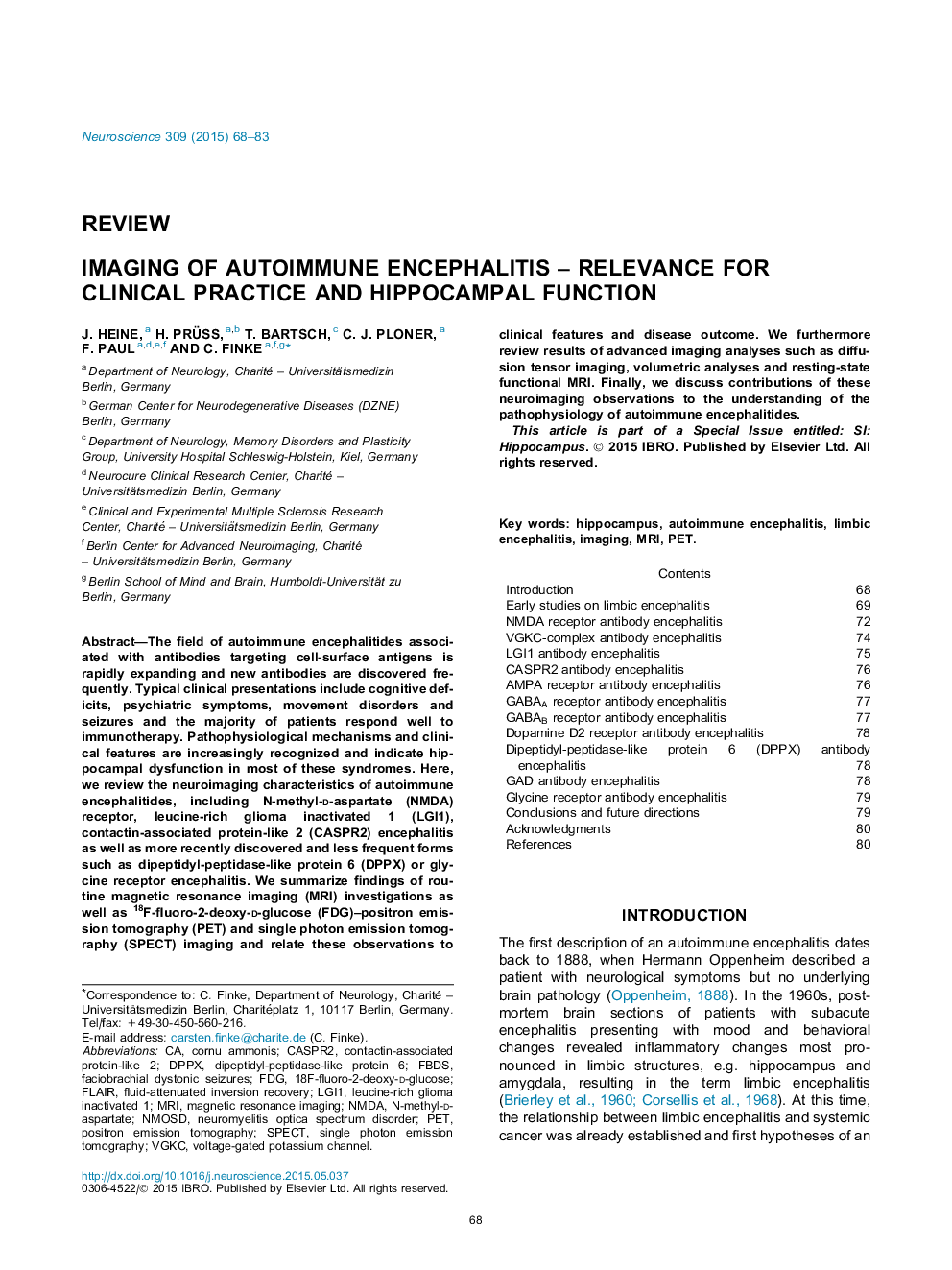| Article ID | Journal | Published Year | Pages | File Type |
|---|---|---|---|---|
| 6271753 | Neuroscience | 2015 | 16 Pages |
â¢Neuroimaging features of autoimmune encephalitides associated with neuronal surface antibodies are reviewed.â¢Clinical MRI and FDG-PET as well as advanced imaging studies are summarized.â¢Imaging characteristics are discussed in relation to clinical features and disease outcome.
The field of autoimmune encephalitides associated with antibodies targeting cell-surface antigens is rapidly expanding and new antibodies are discovered frequently. Typical clinical presentations include cognitive deficits, psychiatric symptoms, movement disorders and seizures and the majority of patients respond well to immunotherapy. Pathophysiological mechanisms and clinical features are increasingly recognized and indicate hippocampal dysfunction in most of these syndromes. Here, we review the neuroimaging characteristics of autoimmune encephalitides, including N-methyl-d-aspartate (NMDA) receptor, leucine-rich glioma inactivated 1 (LGI1), contactin-associated protein-like 2 (CASPR2) encephalitis as well as more recently discovered and less frequent forms such as dipeptidyl-peptidase-like protein 6 (DPPX) or glycine receptor encephalitis. We summarize findings of routine magnetic resonance imaging (MRI) investigations as well as 18F-fluoro-2-deoxy-d-glucose (FDG)-positron emission tomography (PET) and single photon emission tomography (SPECT) imaging and relate these observations to clinical features and disease outcome. We furthermore review results of advanced imaging analyses such as diffusion tensor imaging, volumetric analyses and resting-state functional MRI. Finally, we discuss contributions of these neuroimaging observations to the understanding of the pathophysiology of autoimmune encephalitides.
